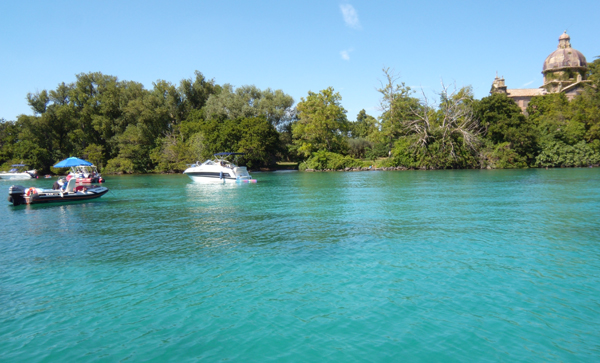http://guidaturisticadiviterbo.blogspot.it/2010/09/le-mura-di-viterbo.html
Le mura di Viterbo
Come già accennato in precedenza, il centro storico di Viterbo è cinto da un circuito murario in peperino, che si estende per circa 4 km. Nonostante i numerosi restauri ed interventi di manutenzione subiti attraverso i secoli, il tracciato rimane sostanzialmente quello realizzato tra l’XI ed il XIII secolo: il primo tratto fu infatti innalzato dal 1095, in concomitanza con la nascita di una struttura organizzativa di tipo comunale, ed assunse il suo aspetto definitivo nel 1268. Gli aspetti più caratterizzanti sono la presenza, ancora oggi, di numerose torri e porte urbiche (in tutto quattordici: di alcune ne rimane solo traccia, altre furono chiuse e riaperte in diverse epoche). Il complesso murario è il risultato di più fasi costruttive legate alla storia della città, dalla fondazione al periodo di maggior splendore, fino al declino dai primi anni del XIV secolo, quando i Pontefici lasciarono Viterbo ed il Lazio per rifugiarsi ad Avignone. Nonostante l’evoluzione delle tecniche costruttive, rimase costante l’impiego di determinati materiali, di cui cambiarono solo le pezzature e le modalità di posa: i più utilizzati, tutti facilmente reperibili nella zona del viterbese, erano il peperino ed il tufo legati con un impasto di calce e pozzolana.
Nonostante le diverse fasi costruttive dell’intero circuito murario, alla fine del XIII secolo Viterbo doveva presentare una struttura difensiva piuttosto omogenea e, come già detto, i restauri e gli interventi di manutenzione dei secoli successivi non hanno modificato il tracciato originale, sebbene numerosi crolli e danneggiamenti abbiamo interessato soprattutto il tratto orientale (in particolare a seguito dei bombardamenti della seconda guerra mondiale).
The walls of Viterbo
As mentioned above, the historical center of Viterbo is surrounded by a circle of walls in lava stone, which extends for approximately 4 km. Despite extensive restoration and maintenance suffered through the centuries, the route remains substantially realized that between the eleventh and thirteenth centuries: the first part was in fact raised from 1095, coinciding with the birth of a municipal-type organizational structure, and assumed its final appearance in 1268. The most distinctive features are the presence, even today, many of the towers and city gates (all fourteen of some remains only track, others were closed and reopened several times). The whole wall is the result of several phases of construction related to the history of the city, from the foundation to the period of greatest splendor, until the decline of the early fourteenth century when the popes left Viterbo and the Lazio to take refuge in Avignon. Despite the evolution of construction techniques, remained constant use of certain materials, which changed only the sizes and the method of installation: the most used, all readily available in the area of Viterbo, were the tuff and tuff associated with a mixture of lime and pozzolana.
Despite the different phases of construction of the circuit wall at the end of the thirteenth century Viterbo had to submit a defensive structure rather homogeneous and, as already mentioned, the restoration and maintenance of later centuries have not changed the original route, although several collapses and damage have affected mainly the eastern section (in particular as a result of the bombing of the Second world War).
LE PORTE DI VITERBO:
Viterbo Città d'Arte - Porta della Verità
Fu chiamata anticamente Porta dell'Abate per la sua vicinanza con l'abbazia di S. Maria della Verità. Sopra la porta sono posti gli stemmi di Benedetto XIII, del governatore Oddi, del vescovo Sermattei e del comune di Viterbo. L'epigrafe, collocata sulla sua sommità, ricorda che nel 1728 per comodità il Comune provvide ad allargare la rozza e vecchia porta ormai in rovina.
Viterbo City of Art - Door of Truth
It was formerly called Port of Abbot for its proximity to the Abbey of St. Mary of Truth. Above the door are placed the arms of Benedict XIII, the governor Oddi, Sermattei the bishop and the town of Viterbo. The epigraph, placed on its top, remember that in 1728 the City for convenience provident to enlarge crude and old door in ruins.
Sopra la porta è posto l'epigrafe, collocata sulla sua sommità a ricordo che nel 1728 per comodità il Comune provvide ad allargare la rozza e vecchia porta ormai in rovina.
Above the door is placed the inscription, placed on the top to remind you that in 1728 the City Council for convenience provident to enlarge crude and old door in ruins.
Sopra la porta è posto lo stemma di Benedetto XIII.
Above the door is placed the emblem of Benedict XIII.
Sopra la porta è posto lo stemma del governatore Oddi.
Above the door is placed the coat of arms of the governor Oddi.















